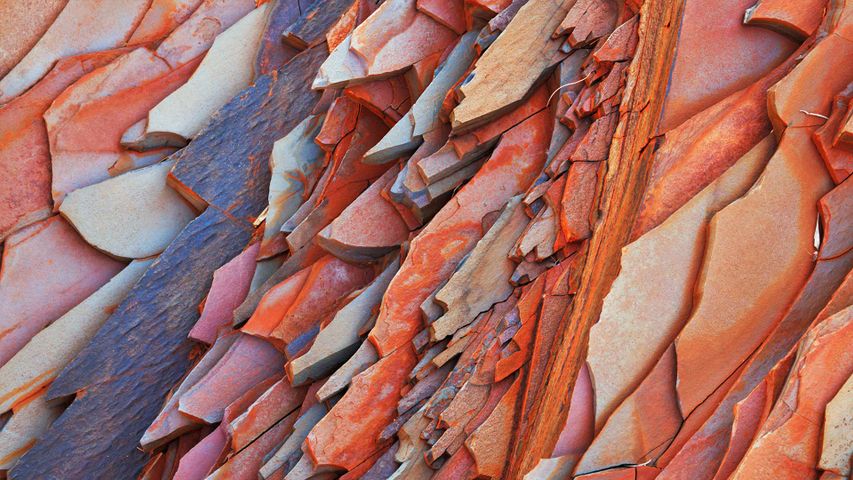Ochre sea star on kelp off the coast of California, USA
© Ralph Pace/Minden Picture
A star is borne by seaweed
With a little 'kelp', this starfish is enjoying a change from its typical view of craggy tidal beds. Both passenger and vehicle in this photo, taken off the coast in California, USA, play important roles in their ecosystems.
Canopies of underwater 'kelp forests' create habitats that support many varieties of sea creatures. Distinguished by broad leaves and spherical gas bladders that make the seaweed float, kelp is also part of the diet for many organisms. ('Many organisms' includes us: Kelp-derived algin is often added to ice cream to keep it from crystallising).
And despite appearances, our cute little guest star (the ochre sea star) is actually a terrifying killer if you happen to be a mollusk. Starfish like this one have the rare ability to wrench open mussels just wide enough to insert a stomach-like organ that digests the bivalve's body right inside the shell. Gross, but necessary: A landmark study showed that mussel populations grow to invasive levels in areas where even a few ochre sea stars have been removed, making them a 'keystone species' - or critical top predator.
Related Images
Bing Today Images



 California sea lion in a forest of giant kelp, Baja California, Mexico
California sea lion in a forest of giant kelp, Baja California, Mexico
 The English National Ballet's 2016 production of 'The Nutcracker' at the London Coliseum in London, England
The English National Ballet's 2016 production of 'The Nutcracker' at the London Coliseum in London, England
 A Christmas Island red crab during its migration
A Christmas Island red crab during its migration
 Stone structure in Hamersley Gorge, Karijini National Park, Australia
Stone structure in Hamersley Gorge, Karijini National Park, Australia
 Piraputanga schooling in the Cerrado, Brazil
Piraputanga schooling in the Cerrado, Brazil
 Atlantic ghost crab
Atlantic ghost crab
 Fort Bourtange, Netherlands
Fort Bourtange, Netherlands
 Horned ghost crab on Bird Island in the Seychelles
Horned ghost crab on Bird Island in the Seychelles


